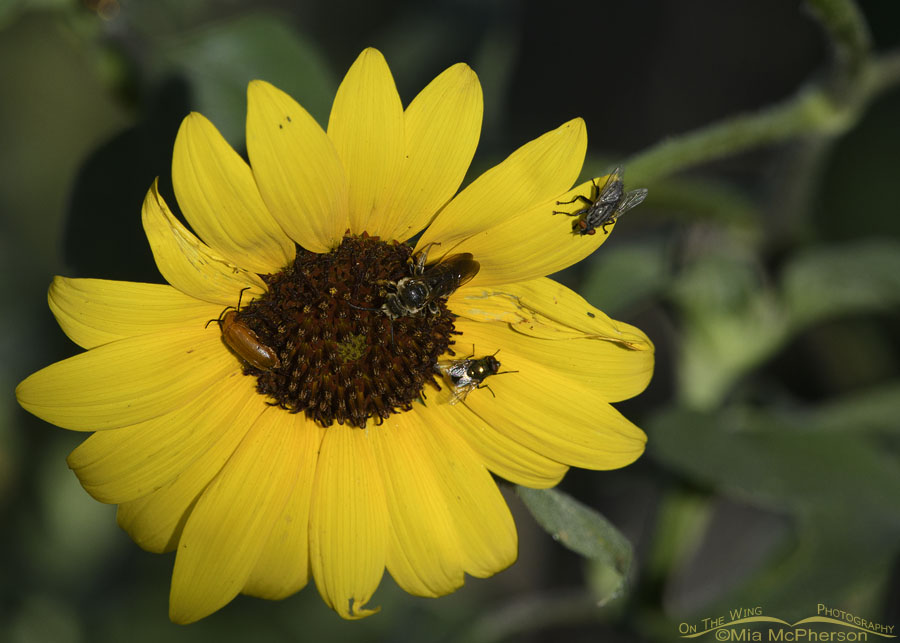 Common Sunflower, Blister Beetle, two flies and a bee – Nikon D500, f11, 1/1000, ISO 640, -0.7 EV, Nikkor 500mm VR with 1.4x TC, natural light
Common Sunflower, Blister Beetle, two flies and a bee – Nikon D500, f11, 1/1000, ISO 640, -0.7 EV, Nikkor 500mm VR with 1.4x TC, natural light
This morning I wanted to share my recent Common Sunflower photos from Bear River MBR and some of the insects that pollinate these native wildflowers.
This image shows the sunflower with a Blister Beetle, a possible Long-horned Bee, a Common Green Bottle Fly and at the top right a Flesh Fly. The flies and the beetle may be accidental pollinators.
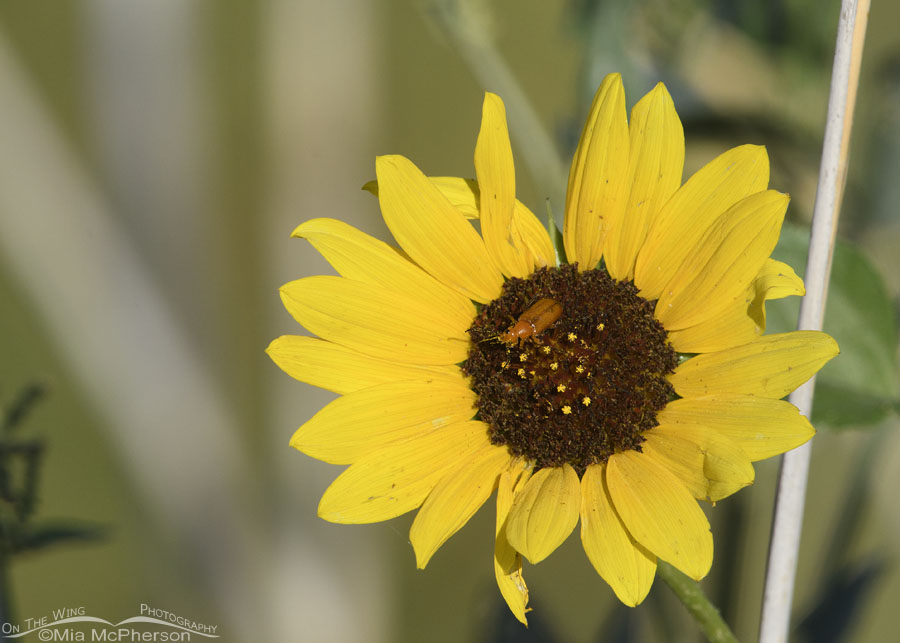 Common Sunflower with a Blister Beetle – Nikon D500, f11, 1/1000, ISO 640, -0.7 EV, Nikkor 500mm VR with 1.4x TC, natural light
Common Sunflower with a Blister Beetle – Nikon D500, f11, 1/1000, ISO 640, -0.7 EV, Nikkor 500mm VR with 1.4x TC, natural light
A Blister Beetle and I once met in Georgia where I was washing my dogs in the front yard. The beetle crawled up my jeans to get away from the soaking ground then proceeded to crawl up my back under my shirt. I literally thought my back was on fire and my shirt was in flames. The path the beetle left on my back was at least 4 inches wide and went from my waistband to the middle of my shoulder blades. The path was purple, green, yellow and blistered.
Blister Beetles excrete a toxic body fluid called cantharidin through their leg joints. Cantharidin is a colorless and odorless fatty fluid that is toxic and can cause blisters upon contact.
Now that I know Blister Beetles are easily found on these wild sunflowers I’ll never walk among them again!
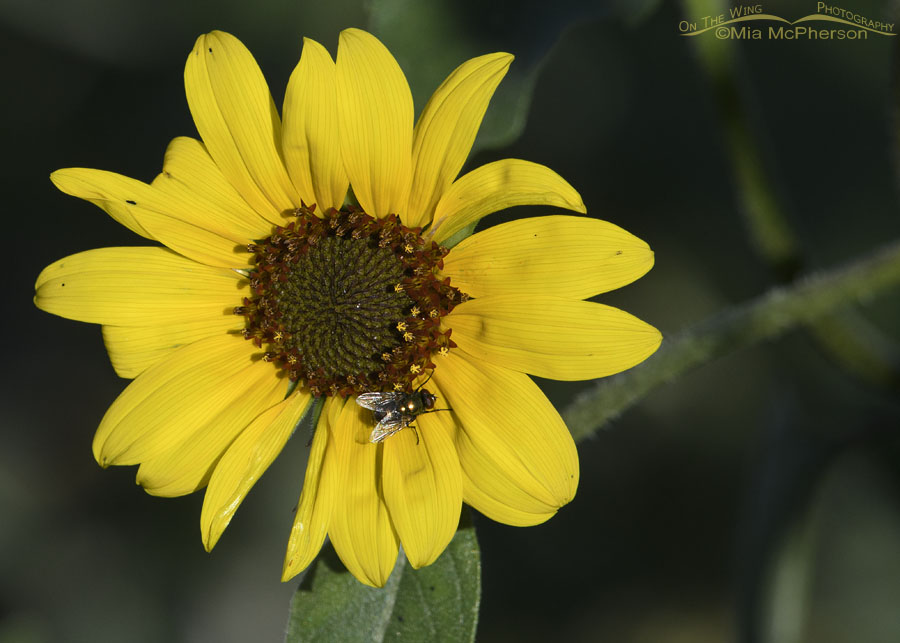 Common Sunflower and a fly – Nikon D500, f11, 1/1000, ISO 640, -0.7 EV, Nikkor 500mm VR with 1.4x TC, natural light
Common Sunflower and a fly – Nikon D500, f11, 1/1000, ISO 640, -0.7 EV, Nikkor 500mm VR with 1.4x TC, natural light
I don’t often see Common Green Bottle Flies on these wild sunflowers so seeing two in one day was interesting for me.
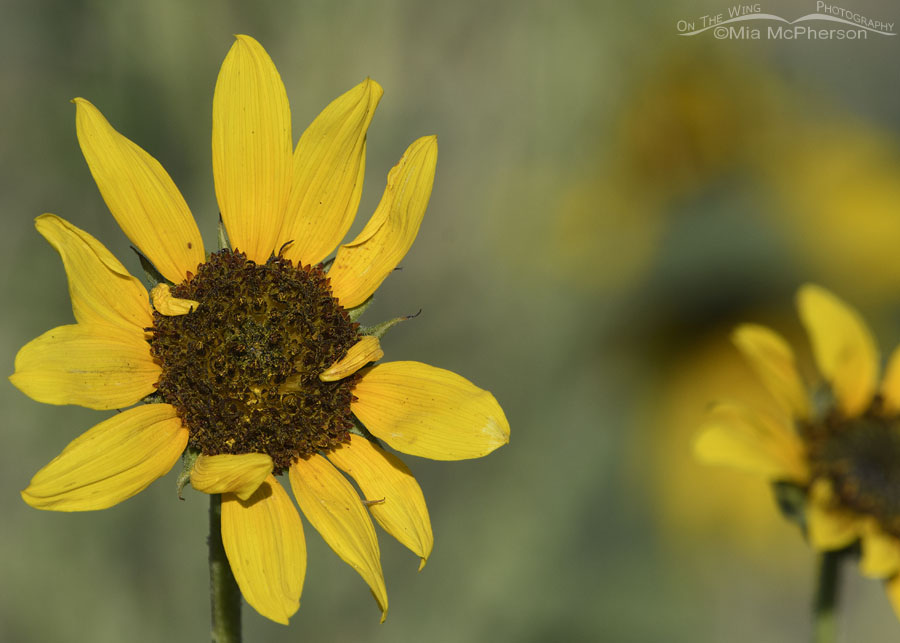 Common Sunflower hug – Nikon D500, f9, 1/2000, ISO 640, -0.7 EV, Nikkor 500mm VR with 1.4x TC, natural light
Common Sunflower hug – Nikon D500, f9, 1/2000, ISO 640, -0.7 EV, Nikkor 500mm VR with 1.4x TC, natural light
The Common Sunflower bloom didn’t have any insects on it that I could see but I liked this blossom because it looked like it was hugging itself. After discussing my painful Blister Beetle encounter I could use a hug.
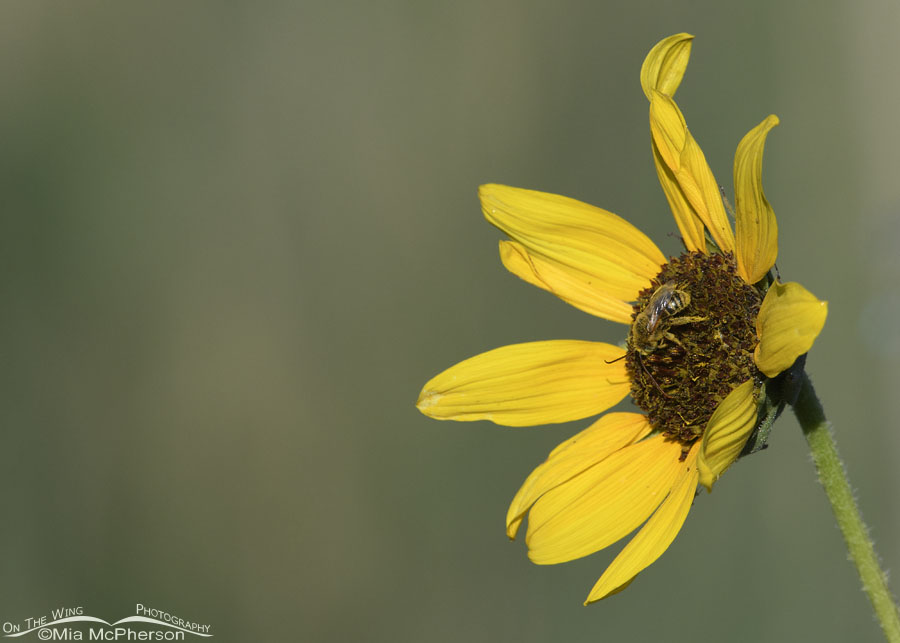 Common Sunflower plus a pollen covered bee – Nikon D500, f9, 1/2000, ISO 640, -0.7 EV, Nikkor 500mm VR with 1.4x TC, natural light
Common Sunflower plus a pollen covered bee – Nikon D500, f9, 1/2000, ISO 640, -0.7 EV, Nikkor 500mm VR with 1.4x TC, natural light
We have many native bees species in northern Utah and across North America that I often find myself frustrated when I try to identify them. I know I am not alone though and that information is good to know.
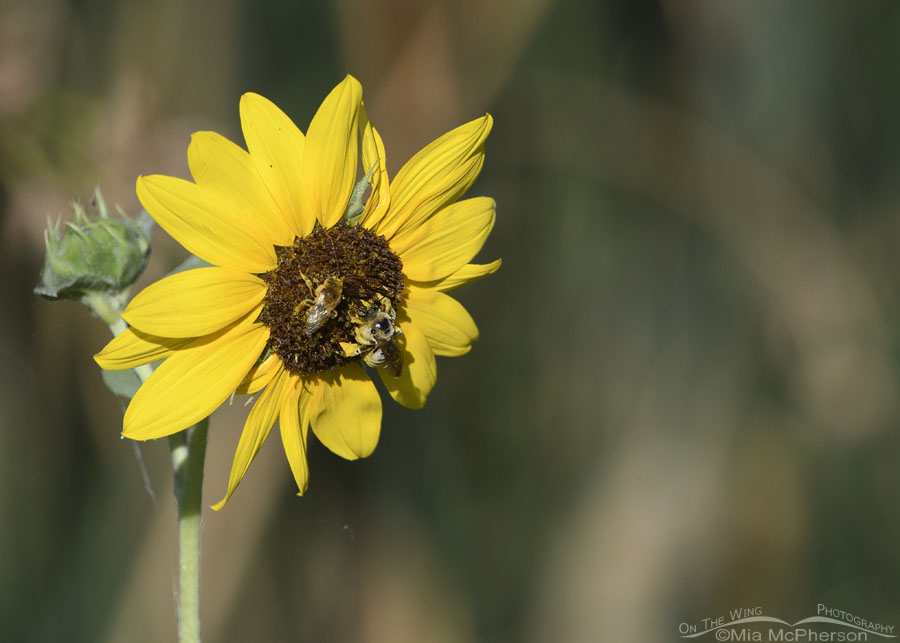 Common Sunflower with two bee species – Nikon D500, f8, 1/1250, ISO 400, -0.7 EV, Nikkor 500mm VR with 1.4x TC, natural light
Common Sunflower with two bee species – Nikon D500, f8, 1/1250, ISO 400, -0.7 EV, Nikkor 500mm VR with 1.4x TC, natural light
This image shows two different native bee species. I believe the one of the left is a Long-horned Bee. The one on the right confounds me. It is nearly covered with pollen and I am not going to even try to guess which species it is.
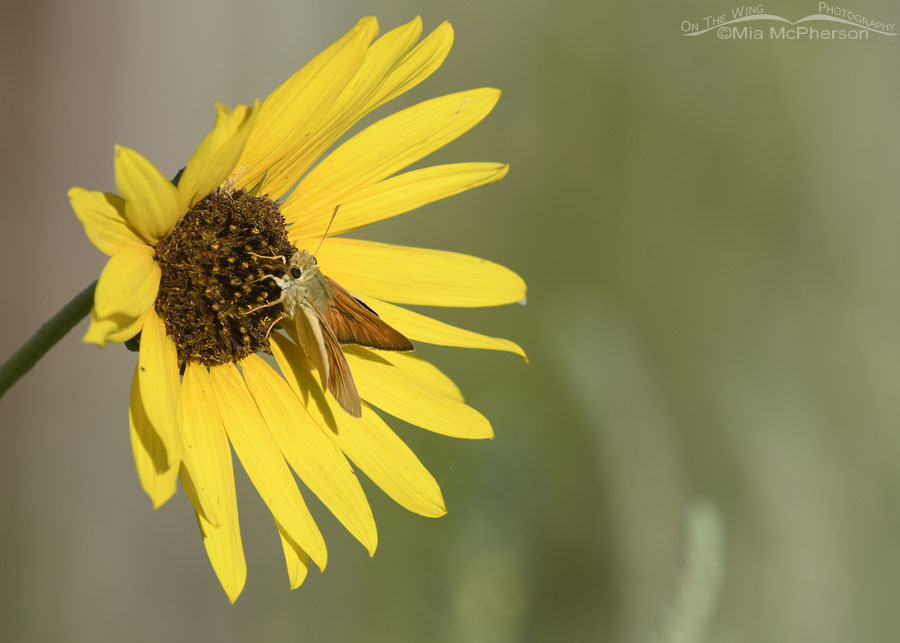 Common Sunflower with a skipper butterfly – Nikon D500, f8, 1/1250, ISO 400, -0.7 EV, Nikkor 500mm VR with 1.4x TC, natural light
Common Sunflower with a skipper butterfly – Nikon D500, f8, 1/1250, ISO 400, -0.7 EV, Nikkor 500mm VR with 1.4x TC, natural light
I found two of these skipper butterflies on wild sunflower blossoms. I believe they are European Skippers which is a species that was introduced in Canada in 1910. I might be wrong about my identification. There are so many skipper butterflies to review!
 Common Sunflower with a bee and a midge – Nikon D500, f8, 1/1250, ISO 400, -0.7 EV, Nikkor 500mm VR with 1.4x TC, natural light
Common Sunflower with a bee and a midge – Nikon D500, f8, 1/1250, ISO 400, -0.7 EV, Nikkor 500mm VR with 1.4x TC, natural light
This final image shows another bee or is it a clump of pollen with a bee trapped in it? Many of the bees I photographed on the Common Sunflower blooms looked the same way. The midge is nearly hidden at the one o’clock position of the sunflower’s petals in case you were wondering.
Pollinators are an important, even critical, part of this planet’s future. My advice is don’t use insecticides or unnecessary chemicals in your yard or garden to help these beneficial insects.
Life is good.
Mia
Click here to see more of my wildflower, shrub and tree photos. Click here to see more of my insect and spider photos.


Lovely photos. I have seen blister beetles on flowers but did not know it’s name or it’s reputation. I will be careful in the future.
Happy to see any sunflowers! The Blister Beetle? Less so. Looks like they’re fond of tomato plants too.
Lots of memories brought to mind with these photos. Thank you Mia!
There is nothing common about these shots. That blister beetle sounds like on to avoid. Always. Despite being a much needed pollinator.
Amazing how much pollen these bees seem to be getting from sunflowers!